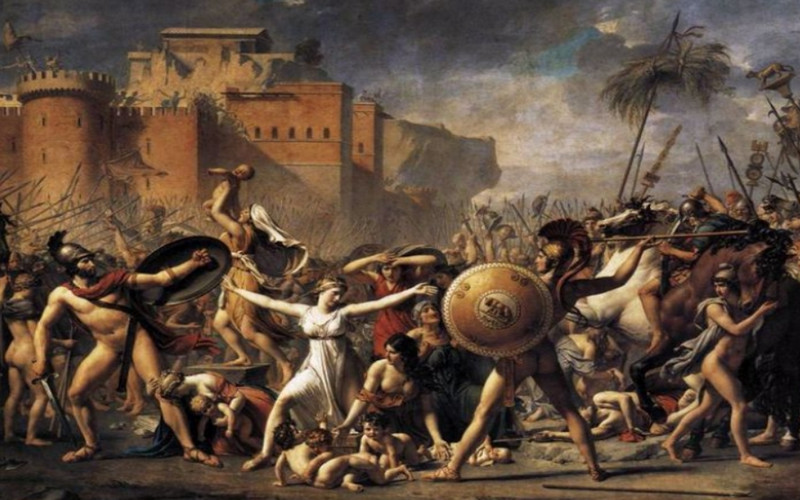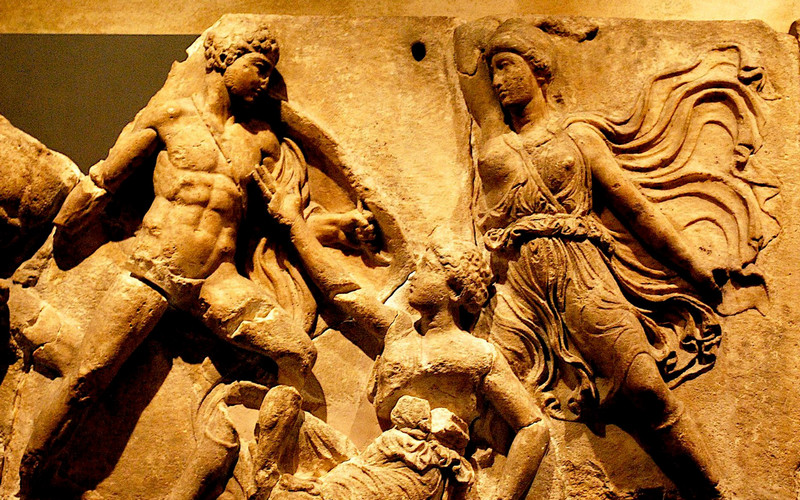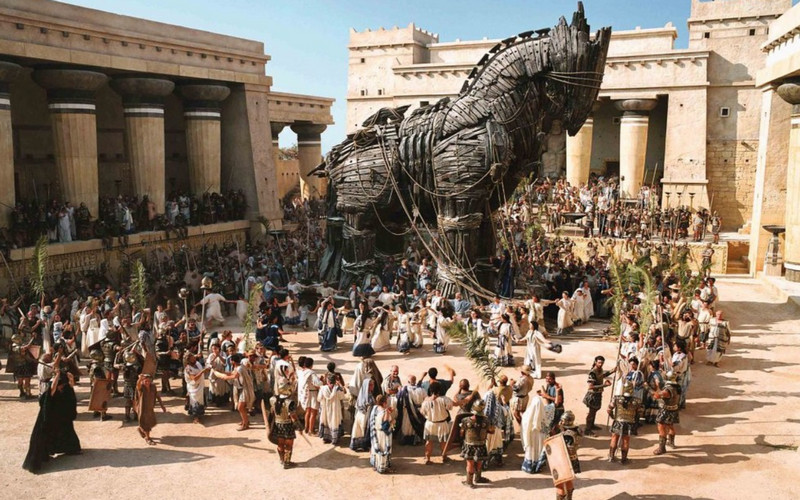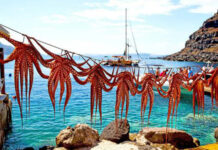The story of the Trojan War, first named in the Iliad, Homer’s 8th century BC epic poem, tells how the Greeks sought to avenge the capture of Helen, wife of Menelaos, the famous king of Sparta, by the Trojan prince, Paris. Recent archaeological evidence of the remains of the city identified with ancient Troy in modern Turkey suggests that the myth may have a basis in fact. Many of the ancient sites in the Peloponnese, such as Mycenae and Pylos, are considered to be the cities of some of the heroes of the Trojan war.
GATHERING OF THE HEROES
When Paris carries Helen back to Troy, her husband King Menelaos summons an army of Greek kings and heroes to avenge his crime. His brother, King Agamemnon of Mycenae, leads the force, its ranks include young Achilles, destined to die in Troy. At Aulis, their departure is delayed by an unfavorable wind. The sacrifice of Iphigeneia to Artemis, the youngest of Agamemnon’s daughters was the condition for the fleet to depart.
FIGHTING AT TROY
The Iliad starts with the Greek army outside Troy, maintaining a siege that has already been in progress for nine years at that point. Tired of fighting, yet still hoping to win, the Greek camp is torn apart by the fury of Achilles over Agamemnon’s removal of his slave girl called Briseis. The hero takes to his rent and refuses adamantly to fight. Without their greatest warrior, the Greeks are driven back by the Trojans. In the moment of despair, Patroklos persuades his friend Achilles to let him borrow his armor. Achilles agrees and Patroklos leads the Myrmidons, Achilles’ troops into battle. The tide is turned but Patroklos is killed in the fighting by Hector, son of King Priam of Troy, who confused him with Achilles. Filled with remorse at the news of his friend’s death Achilles returns to the battle, finds Hector, and kills him in revenge.

PATROKLOS AVENGED
Refusing Hector’s dying wish to allow his body to be ransomed, Achilles instead hitches it up to his chariot by the ankles and drags it around the walls of Troy, then takes it back to the Greek camp. On the other hand, Patroklos is given the most elaborate funeral possible with a huge pyre, sacrifices of animals and Trojan prisoners, and funeral games. Still unsatisfied, for 12 days Achilles drags the corpse of Hector around Patroklos’s funeral mound until the gods are forced to intervene over his callous behavior.
PRIAM VISITS ACHILLES
Instructed by the god of all the gods, Zeus, Priam sets off for the Greek camp holding a ransom for the body of his dead son. With the help of the god Hermes, he reaches Achilles; tent undetected. Entering, he pleads with Achilles to think of his own father and to show mercy. Achilles gives in and allows Hector to be taken back to Troy for a funeral and burial. Although the Greek heroes were greater than mortals, they were portrayed as beings with flaws and human emotions who had to face moral dilemmas and life challenges.
ACHILLES KILLS THE AMAZON QUEEN
Penthesileia was the Queen of the Amazons, a tribe of warlike women famous for cutting off their right breasts to make it easier to wield their weapons. They come to support the Trojans. In the battle, Achilles finds himself face-to-face with Penthesileia and gives her a final blow. One version of the story has it that as their eyes meet at the moment of her death, they instantly fall in love. The Greek idea of love and death would be explored 2000 years later primarily by the psychologists Jung and Freud.
THE WOODEN HORSE OF TROY
As was foretold, Achilles was killed at Troy by an arrow in his heel from Paris’ bow. With this weakening of their military strength, the Greeks came up with an idea. Before sailing away they built a great wooden horse in which they conceal some of their best fighters. The rumor was put out that this is a gift to the goddess Athena and if the horse enters Troy, the city can never be taken. After some doubts, but swayed by supernatural signs, the Trojans drag the horse inside the walls. That night, the Greeks sail back, the soldiers creep out of the horse and Troy is put on fire. Priam, with many others, is murdered. Among the Trojan, survivors is Aeneas who escaped to Italy and founded the race of Romans: a second Troy. The next part of the story (the Odyssey) tells of the adventures of the heroes on their way back home.
DEATH OF AGAMEMNON
Klytemnestra, the wife of Agamemnon, had ruled Mycenae in the ten years that he had been away fighting in Troy. She was accompanied by Aigisthos, her lover. Intent on vengeance for the death of her daughter Iphigeneia, Klytemnestra receives her husband with a triumphal welcome and then brutally kills him, with the help of Aigisthos. Agamemnon’s fate was a result of a curse laid on his father, Atreus, which was finally expiated by the murder of both Kletemnestra and Aigisthos by her son Orestes and daughter Elektra. In those myths, the will of the gods both shapes and overrides that of heroes and mortals.
GREEK MYTHS IN WESTERN ART
From the Renaissance onwards, Greek myths have been a resourceful inspiration for artists and sculptors. Kings and queens throughout history were often portrayed as gods and goddesses with their symbolic attributes of love or war. Myths have also been an inspiration for artists to paint nude or classically draped figures. This was true of the 19th-century artist Lord Leighton, whose depiction of the human body was inspired by the Classical ideals of beauty.








